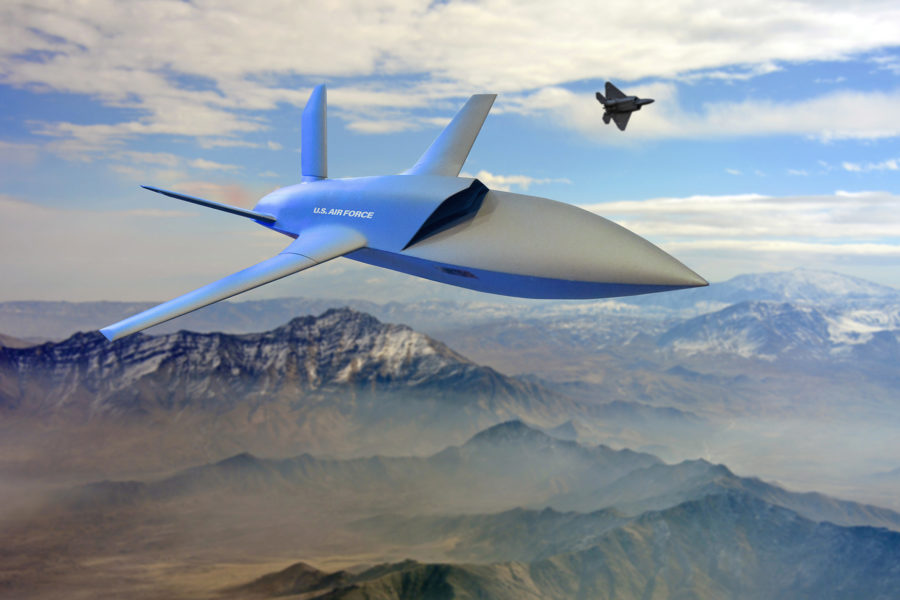The Air Force Life Cycle Management Center on July 23 awarded indefinite delivery, indefinite quantity contracts to Boeing Co., General Atomics Aeronautical Systems Inc., Kratos Unmanned Aerial Systems, Inc., and Northrop Grumman Systems Corp., authorizing the companies to compete for up to $400 million in delivery orders for the Skyborg Vanguard Program over the next five years.
Skyborg—one of three USAF Vanguard programs outlined in the Air Force Science and Technology 2030 initiative—is an affordable unmanned system that will partner with fighter jets and utilize artificial intelligence to conduct strike and intelligence-collection missions that are too dangerous for manned aircraft.
“Because autonomous systems can support missions that are too strenuous or dangerous for manned crews, Skyborg can increase capability significantly and be a force multiplier for the Air Force,” Brig. Gen. Dale R. White, program executive officer for fighters and advanced aircraft, said in a release. White and Air Force Research Laboratory Commander Brig. Gen. Heather L. Pringle oversee the Skyborg program.
“We have the opportunity to transform our warfighting capabilities and change the way we fight and the way we employ air power,” White said.
The Vanguard initiative looks to speed up the time it takes to go from research to operational use. USAF has said it wants Skyborg to be operationally capable by the end of 2023.
Kratos is already flight testing its XQ-58A Valkyrie, created in partnership with AFRL, and will participate in an upcoming Advanced Battle Management System demonstration. Boeing has said it plans to submit a variant of its “loyal wingman” combat drone designed for the Royal Australian Air Force. Lockheed Martin and General Atomics have not said what they submitted, and messages left for the companies were not immediately returned.
“Autonomy technologies in Skyborg’s portfolio will range from simple play-book algorithms to advanced team decision making and will include on-ramp opportunities for artificial intelligence (AI) technologies,” Pringle said. “This effort will provide a foundational government reference architecture for a family of layered, autonomous, and open-architecture UAS.”
